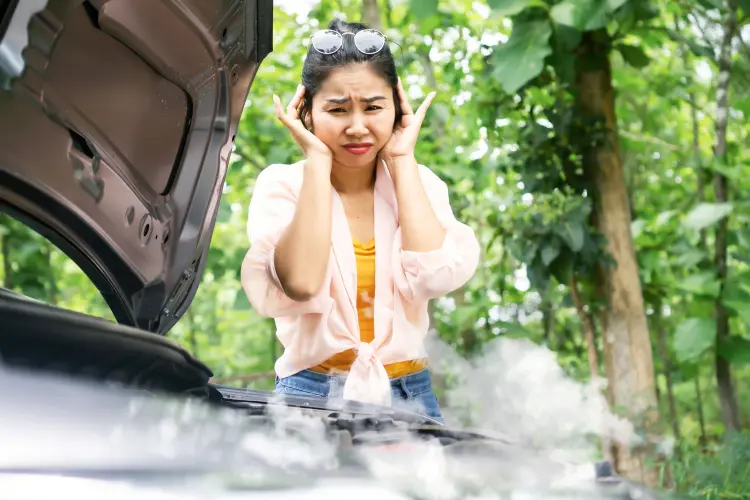What To Do When Your Car Overheats (And How An Extended Warranty Can Help)
engine overheating
5,211Few things are more alarming than your temperature gauge creeping into the red or seeing steam billow from under the hood. An overheating engine can lead to warped heads, blown gaskets, or a seized motor—but if you act quickly and smartly, you can minimize damage and get back on the road safely. Follow these steps, and learn why having an extended warranty can turn a stressful breakdown into a manageable event.

1. Recognize the Warning Signs
- Temperature Gauge: If it passes halfway toward “H,” you’re in the danger zone.
- Steam or Sweet Smell: White steam or a sweet, acrid odor means coolant is boiling off.
- Loss of Power or Rough Idling: The engine may stumble or lack power as it overheats. For more on symptoms and causes, see The Drive’s overheating guide.
2. Pull Over Safely
Slow down, turn on hazards, and find a level spot away from traffic. Under a red-zone or steaming condition, shut off the engine immediately to prevent further damage.
3. Let the Engine Cool
Never open the radiator or reservoir cap while the engine is hot—escaping steam and scalding coolant can cause serious burns. Wait at least 15–20 minutes for the system to cool down.
4. Check Coolant Level & Look for Leaks
With the engine cool, remove the reservoir cap and inspect the coolant level. If it’s low, add a 50/50 mix of antifreeze and water. While you’re there, scan hoses and the radiator for drips or damage. For basic “do’s and don’ts,” Jiffy Lube’s guide is a great resource.
5. Restart, Monitor & Proceed Cautiously
After topping off, replace the cap securely, start the engine, and watch the gauge:
- Gauge Returns to Normal: Drive slowly to the nearest service center.
- Gauge Spikes Again: Shut off the engine and arrange a tow.
6. Key Cooling Components to Inspect
Have a technician check for:
- Radiator Cap Failure (pressure loss)
- Stuck Thermostat (blocks coolant flow)
- Leaking Water Pump or Worn Belt (halts circulation)
- Clogged Radiator or Broken Fan (impairs airflow) Mechanic Base’s troubleshooting guide outlines the nine most common overheating causes and fixes.
7. Prevent Future Overheating
- Flush & Refill Coolant every 2–3 years (or per your owner’s manual).
- Inspect Hoses & Belts for cracks or bulges at each oil change.
- Keep the Radiator Clean of leaves and debris to ensure airflow.
- Use OEM or Approved Coolants to avoid corrosion and maintain system pressure.
How an Extended Warranty Reduces the Stress
Cooling-system repairs—radiators, water pumps, head gaskets—can run $500 to $2,000 in parts and labor. With a comprehensive extended warranty that covers engine and cooling components:
- Only Pay Your Deductible: You pay your deductible, the Administrator covers the rest for covered repairs.
- Fast, Direct Billing: In-network shops handle paperwork for you.
- Roadside Assistance: Often included, so you’re never stranded.
Knowing your warranty will shoulder the bulk of the cost lets you focus on safety—rather than repair bills—when overheating strikes.
Conclusion
An overheating engine is serious, but prompt action—pulling over, cooling down, topping off fluids, and monitoring—can prevent catastrophic damage. And if the worst occurs, a solid extended warranty transforms a major repair into a minor inconvenience, giving you peace of mind every mile you drive.
TL;DR: When your engine temperature spikes and steam appears under the hood, every second counts. In this guide, you’ll learn the exact steps to safely pull over, cool down your engine, check and top off coolant, and know when to seek professional help. Plus, discover how an extended warranty can turn an anxiety-filled breakdown into a worry-free repair by covering costly cooling-system failures.
— Robert Vaughn
